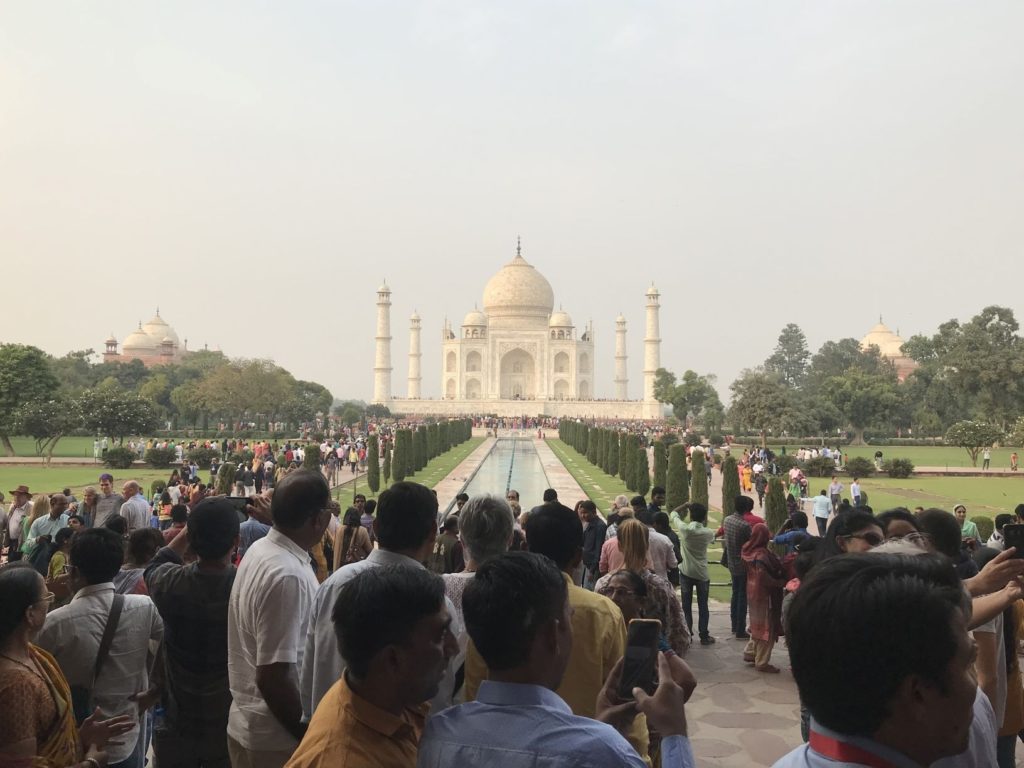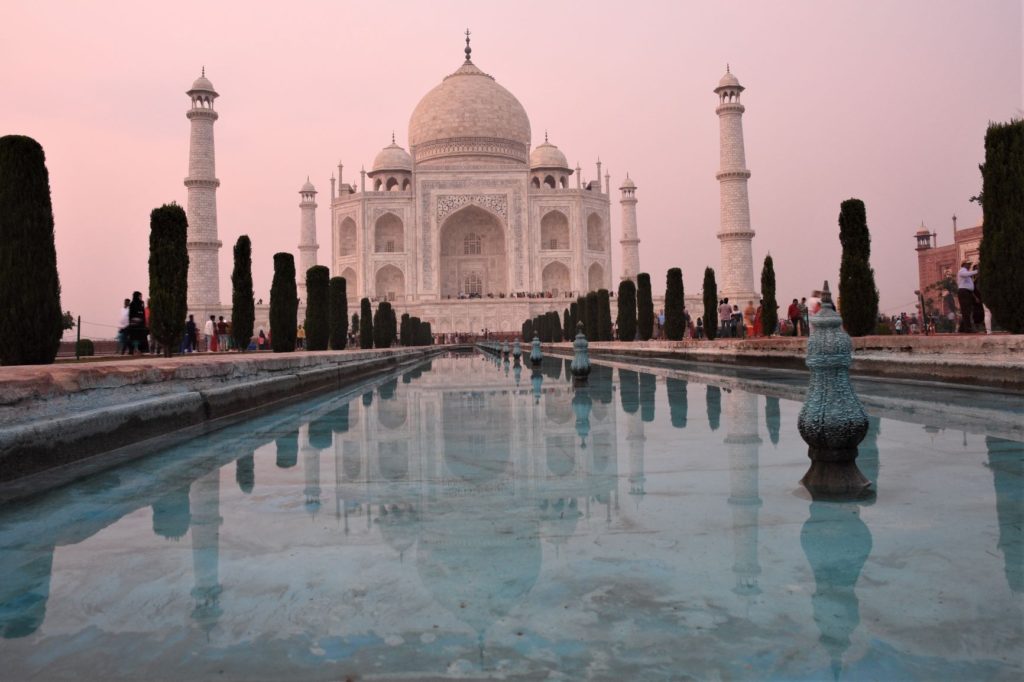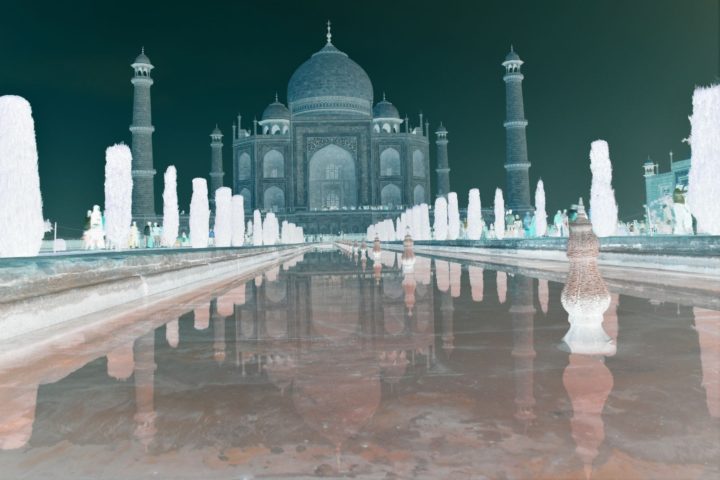The Taj Majal doesn’t emerge slowly from a distance. We turn the corner and there it is, maybe a mile or two away, glaring in its whiteness and larger than life. A wow moment, unmistakable. It looks equally impressive through the embrasures and decorative openings of Fort Agra.  Up close, our guide drones on about the construction story. It took twenty-two years, a Persian designer, a board of architects, twenty thousand laborers, and a thousand elephants to build. Design and detail everywhere on the building. Up close, I can see the intricate patterns, the huge blocks of marble, and the attention to symmetry. But I don’t need to hear all the detail or even see it. The Taj is the forest and not the trees. The guide gets frustrated as our group drifts to appreciate and photograph rather than absorb useless facts and get suckered into a post-Taj shopping misadventure.
Up close, our guide drones on about the construction story. It took twenty-two years, a Persian designer, a board of architects, twenty thousand laborers, and a thousand elephants to build. Design and detail everywhere on the building. Up close, I can see the intricate patterns, the huge blocks of marble, and the attention to symmetry. But I don’t need to hear all the detail or even see it. The Taj is the forest and not the trees. The guide gets frustrated as our group drifts to appreciate and photograph rather than absorb useless facts and get suckered into a post-Taj shopping misadventure.
The Taj is a mausoleum and my mind wants to fill in a story. Why did you come to be, Taj? Who spends the equivalent of a billion dollars on a dead person? Shah Jahan created the mausoleum for his third wife, apparently his favorite. What about the first two? How come they didn’t rate? They have smaller mausoleums outside the grounds somewhere but nowhere near as impressive as the Taj for Mumtaz Mahal, the chosen one, the jewel of the palace, his third wife. Did they have something to do with her demise? It sounds suspicious to me. I can only speculate about the missing backstory but isn’t that how good myths get started?
The conventional storyline is love. Is the monument the physical manifestation of their love? How much love do you have with three wives and a rotating harem of a thousand women recruited at the age of twelve and retired at the age of eighteen? I have to resist the urge to judge based on my modern values. He loved her fourteen kids worth, she obviously living in perpetual pregnancy. Some claim it is a monument to his guilt. Did he push her down over a power struggle causing her to die in childbirth? Or because she beat him again at a game of chess, his intellectual superior? The story is Mumtaz. She is reported to have been beautiful, smarter than the Shah, and ambitious: a deadly combination in the game of thrones of any empire.
The guide perpetuates the myth of the black Taj. A mirror copy of the Taj, the Shah’s plan for his own death. The Black Taj suggests vanity and legacy more than love. In the storyline, the youngest son defeated his older brother and imprisoned his father to keep him wasting another billion dollars worth of power. My Wikipedia research back home shows the only real reference to the black Taj is in a throwaway line in the writings of a European traveler. The Shah took ill and given up for dead, the youngest son won the ensuing power struggle meaning he helped the older brother to detach from his head. The Shah recovered but the youngest son imprisoned him to maintain his power.
Back in modern times sans the black Taj, we use foreign privilege to jump the line to view the interior of the mausoleum.  Indian tourists wait in a line that wraps completely around the building into a marble courtyard filled with a maze of twists and turns for the privilege of seeing the inside. I don’t know what it means to them to justify waiting for so long. We are rushed around the gravesite so that the throngs of visitors each has their chance at a viewing before closing time. Muslim law forbids the elaborate decoration of graves. The Shah followed the letter of Muslim law more so than its intent, judging by the excessively ornate and elaborate surroundings. Only the graves themselves are plain.
Indian tourists wait in a line that wraps completely around the building into a marble courtyard filled with a maze of twists and turns for the privilege of seeing the inside. I don’t know what it means to them to justify waiting for so long. We are rushed around the gravesite so that the throngs of visitors each has their chance at a viewing before closing time. Muslim law forbids the elaborate decoration of graves. The Shah followed the letter of Muslim law more so than its intent, judging by the excessively ornate and elaborate surroundings. Only the graves themselves are plain.
I’m not sure the Shah and Mumtaz get much rest or peace disturbed by hordes of visitors and the dissonance of speculation, myth, and innuendo.

